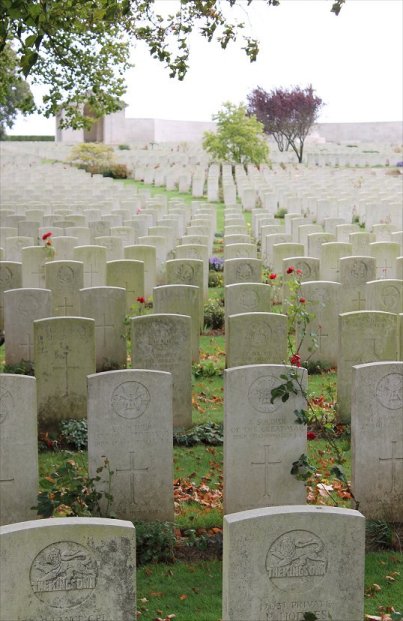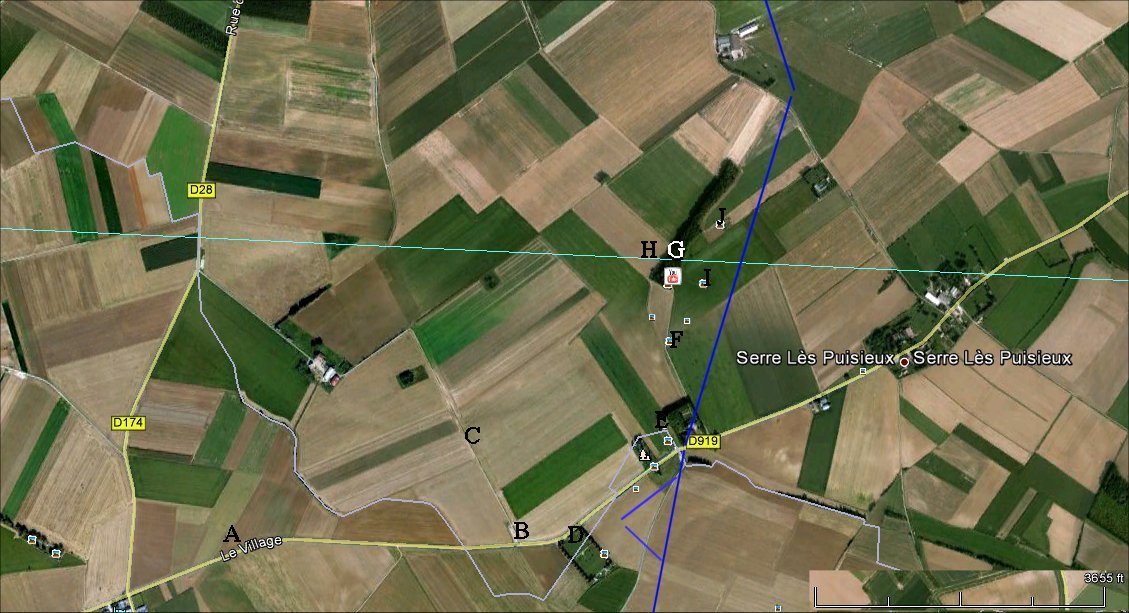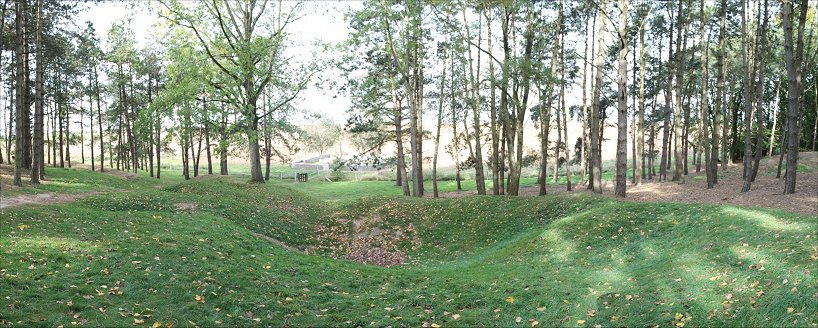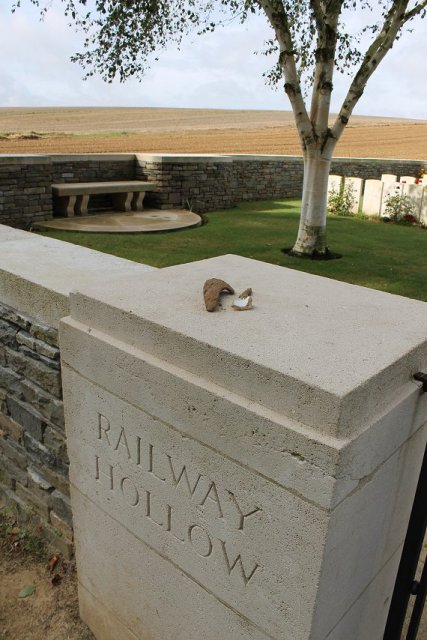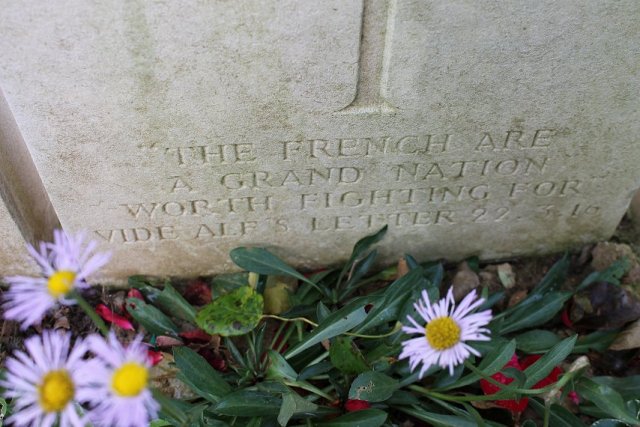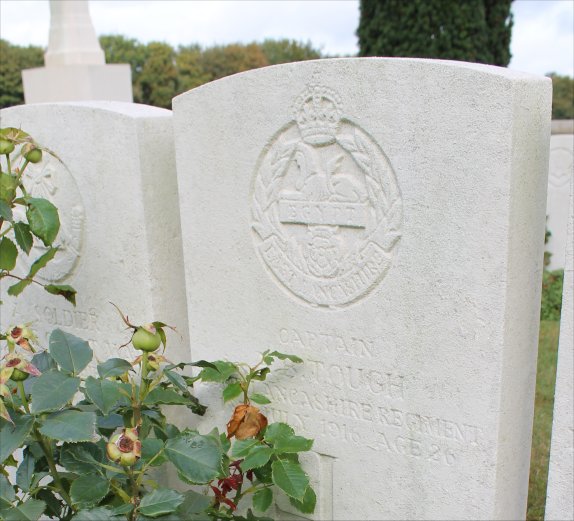This is the first cemetery that we encounter down the dirt road.
The British front line was roughly along the road that we have been taking then went along a line of four small forests
named Matthew, Mark, Luke, and John. With one of the wood lots
erased, the remaining three have grown together and are now protected
as the Sheffield Memorial Park. At 7:20, the British bombardment
shifted tot he German second line, and 10 minutes later the infantry
attack began. Immediately German artillery pummeled the British front
line. As the attack began, unhindered by British artillery, German
machine guns and riflemen began mowing down the attacking British,
organized mostly by region in Pals battalions. At the time, shells
craters littered the ground, providing some cover for the attackers.
The 15th West Yorks
from Leeds attacked toward Serre across the ground now occupied by the
Serre Road No. 3 Cemetery, losing over 500 men in the process.
The follow-on unit also lost over 500 men. Losses were so great, at
least one Brit commented that the Germans now had a good opportunity to
attack. Most of the men didn't make it to the German wire, but due to
a report that some Brits had reached Serre, a second attack was
launched by two companies somewhere in this general vicinity. It was
soon stopped by German artillery. Due to the
nature of the fighting with men left unburied between the lines after
the battle, the cemetery contains a majority of unknown
soldiers.
Next we continue to Sheffield Memorial Park.
|
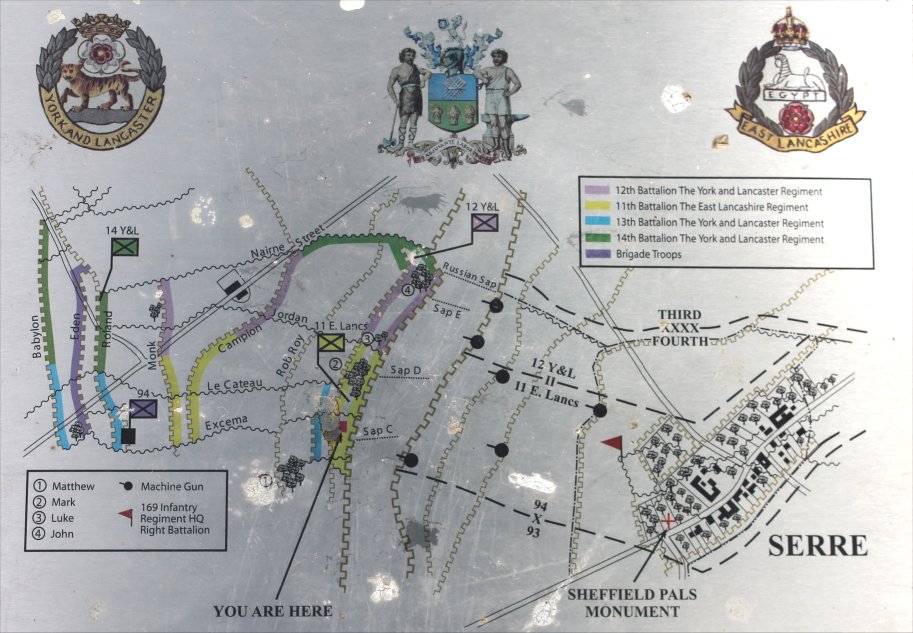 |
